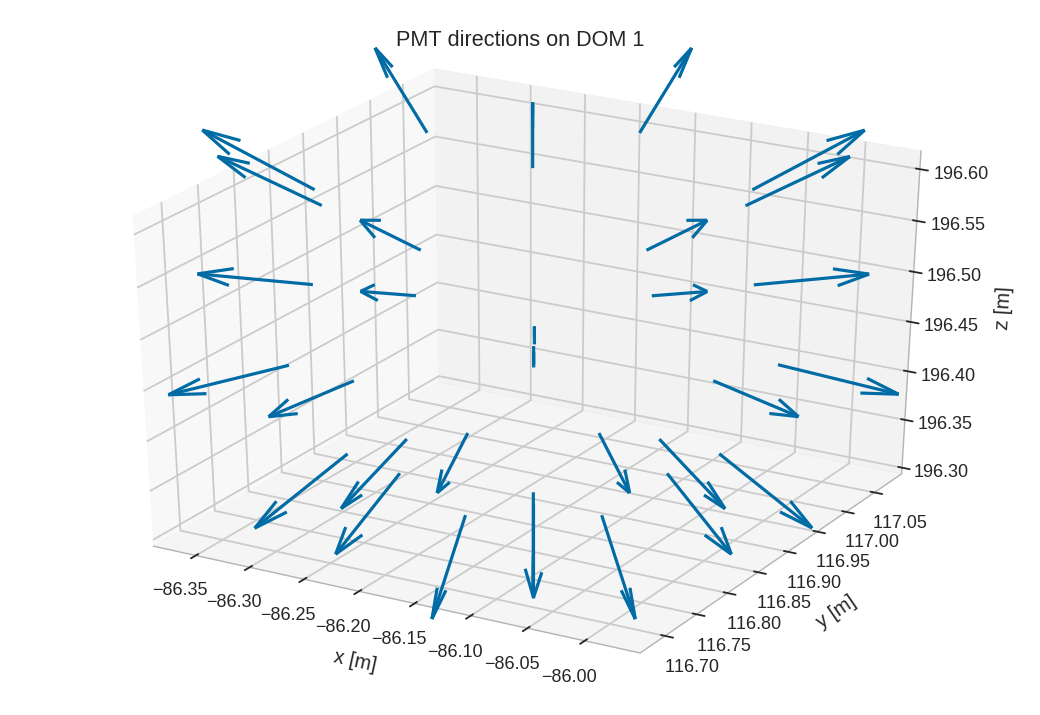Note
Click here to download the full example code
PMT Directions¶
Plot the PMT directions for a given DOM.
from __future__ import absolute_import, print_function, division
# Author: Tamas Gal <tgal@km3net.de>
# License: BSD-3
from mpl_toolkits.mplot3d import axes3d
import matplotlib.pyplot as plt
import km3pipe as kp
import km3pipe.style
km3pipe.style.use('km3pipe')
km3pipe.style.use('talk')
DETX = 'data/orca_115strings_av23min20mhorizontal_18OMs_alt9mvertical_v1.detx'
det = kp.hardware.Detector(DETX)
Out:
Loading style definitions from '/home/docs/checkouts/readthedocs.org/user_builds/km3pipe/conda/stable/lib/python3.5/site-packages/km3pipe/kp-data/stylelib/km3pipe.mplstyle'
Loading style definitions from '/home/docs/checkouts/readthedocs.org/user_builds/km3pipe/conda/stable/lib/python3.5/site-packages/km3pipe/kp-data/stylelib/km3pipe-talk.mplstyle'
Detector: Parsing the DETX header
Detector: Reading PMT information...
Detector: Done.
Alternatively, you can use the det_id to retrieve the geometry from the DB.
# det = kp.hardware.Detector(det_id=29)
Let’s take the first DOM ID
dom_id = det.dom_ids[0]
…and get the table of the PMTs in the chosen DOM:
pmts = det.pmts[det.pmts.dom_id == dom_id]
The quiver function can directly plot the PMT data, since those are stored as numpy arrays.
fig = plt.figure()
ax = fig.gca(projection='3d')
ax.quiver(
pmts.pos_x,
pmts.pos_y,
pmts.pos_z,
pmts.dir_x,
pmts.dir_y,
pmts.dir_z,
length=0.1
)
ax.set_xlabel("x [m]")
ax.set_ylabel("y [m]")
ax.set_zlabel("z [m]")
ax.set_title("PMT directions on DOM {}".format(dom_id))

Total running time of the script: ( 0 minutes 1.384 seconds)